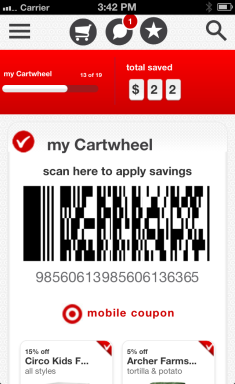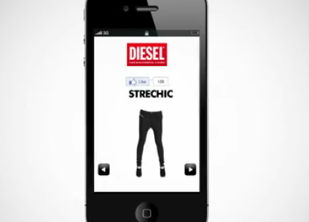So much for the internet killing off in-store purchasing: the results of surveys by research firm Vision Critical show sites like Facebook, Twitter and Pinterest are driving even more in-store purchases than online sales – an incredible 41% of consumers research products online before purchasing them in stores, while only while 26% of consumers browse in stores and then buy online.
Nordstrom hopes in-store pinning can drive sales
We’re used to hearing how Pinterest is driving e-commerce, but what is equally interesting is that Pinterest popularity can be used to drive sales in physical stores as well. GigaOM recently reported that department store Nordstrom has been tagging items that have been re-pinned on Pinterest with the site’s logos, in order to demonstrate their appeal among users. Clearly, Pinterest sharing is seen as a marker of good taste by Nordstrom, who will be hoping to appeal to their social media-savvy customers’ sense of fashion trends.
 Photo courtesy of Nordstrom.
Photo courtesy of Nordstrom.
QR codes can expand the purchasing experience… and grow your online fanbase
Many brands have not quite got to grips with QR code technology, but it offers a slick way to link to expanded product information, your Facebook page, or even a media experience, such as an audio track for a record or a film trailer for a DVD.
Buying a new bike can be an expensive business, so you want to have the necessary information in front of you before you purchase. Evans Cycles feature QR codes on all of their product information tags that link through to a mobile optimized site with all the information you might need to know about the bike, plus a section to read and write product reviews, making for a wholly interactive service. As 72% of consumers trust online reviews as much as personal recommendations, encouraging an online conversation really can lead to more sales.
Photo courtesy of Econsultancy.com
Diesel Jeans recently showed the potential of QR codes to cross over into an online presence and promote customer advocacy with a campaign to link their real-world stores to their Facebook page. Customers could scan in-store QR codes to Like a certain product on Facebook, highlighting their retail habits to their friends and building an online/offline relationship between fans, products and brand discussion.
Photo courtesy of Simplyzesty.com
Turning customers into Facebook fans
Target have been trying to turn the tide of customers looking online to find a cheaper alternative by offering discounts to their Facebook fans. The catch is that they are only available in store. Customers can get online deal prices by bringing a barcode into a store on their phone or printed out on paper to redeem when they checkout – and shoppers can see what offers their Facebook friends have chosen, and earn more offers by asking their Facebook friends to sign up too. The scheme is called Cartwheel, and the app keeps your discounts neatly organized – way neater than clipping coupons. It also helps to build Target’s Facebook fanbase and potentially reach more customers with targeted marketing information.

Photo courtesy of facebook.com/appcenter/targetcartwheel
The internet at our fingertips
These examples all demonstrate the importance of the rise of smartphone ownership for connecting our online and offline worlds. The Pew Internet 2013 Smartphone Ownership Report states that 56% of all American adults are now smartphone adopters. Some stores, far from trying to block in-store smartphone use, fearing it will lead customers to internet purchases instead, have embraced the technology: department store John Lewis has offered customers free in-store Wi-Fi access since the end of 2011 – and has seen its online sales increase by 44% as it has integrated its in-store and online presence.
There has been a general movement towards assimilating smartphone use into the everyday physical retail experience, such as Wal-Mart Scan & Go self-checkout pilot program, which allows smartphone users to scan barcodes as they shop and pay for the items at a self-checkout station once they’re done. The original pilot has been successful enough to expand into 130 more stores and from an iPhone-only feature to Android too. This sort of technology opens up the potential for the online experience in physical stores.
Photo courtesy of Wal-mart
The important thing is the smart integration between the online and offline world. Your marketing strategy should incorporate your social media strategy as a way to enhance your more traditional techniques, including the physical retail experience, and to build an engaged online fanbase that translates into real-world sales.
Originally posted in Entrepreneur



